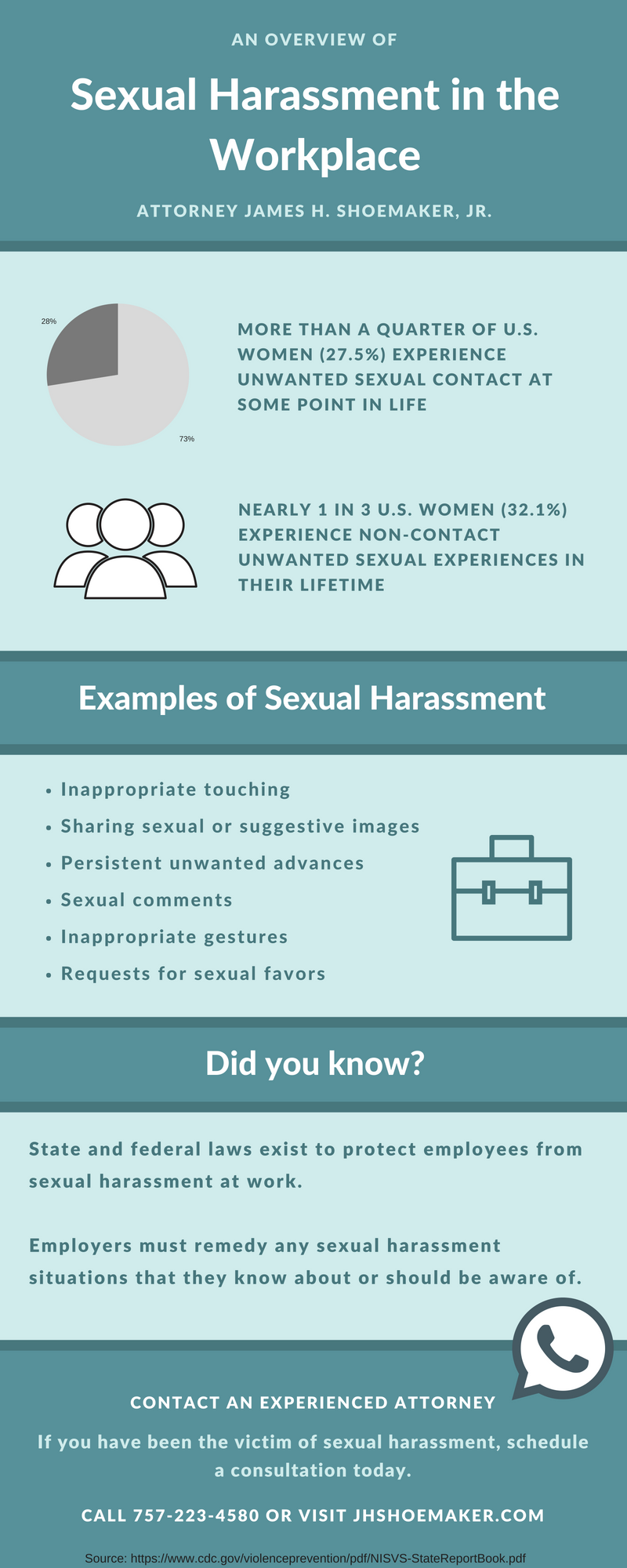
Sexual harassment in the workplace is prohibited under Title VII of the Civil Rights Act of 1964, and some states have even stricter laws against it. Under Title VII it is a form of sex discrimination. Contrary to popular belief, both men and women can be victims of sexual harassment and the harasser may be of the opposite or the same sex. Employers can be held responsible for allowing their employees to be sexually harassed by other employees, contractors, customers, or clients.
Quid Pro Quo
Quid pro quo is Latin term which translates to “this for that”. Quid pro quo sexual harassment occurs when submitting to or putting up with an unwanted sexual advance becomes a condition of getting or keeping your job, receiving a promotion, raise, or something else which is to your benefit, or avoiding demotion or other type of penalty.
The harasser is typically a manger or supervisor, or someone else in a position of authority over the victim. The sexual advance may be of a verbal, non-verbal, or physical nature. An employer or manager who requires an employee or prospective employee to go out on a date or perform a sexual favor in order to be hired or keep their job would fall under quid pro quo.
A sexual harassment victim who submits to the advance or request to avoid negative consequences still has a claim.
Hostile Work Environment
Hostile work environment typically covers sexual harassment that does not involve a trade or offer of trade. Hostile work environment involves behavior of a sexual nature, or directed primarily at employees of one gender, which is threatening, demeaning, intimidating, or offensive.
In order to qualify under hostile work environment, the harassment must be pervasive, not an isolated incident or occasional occurrence, therefore creating an abusive or intimidating work environment.
Conduct which can fall under sexual harassment creating a hostile work environment can include threats, sexual advances, derogatory or inappropriate comments of a sexual nature including references to body parts, requests or demands for sexual favors, and even jokes or the display of pornographic images.
Proving Sexual Harassment
Many elements are involved in proving that conduct which meets the standard of sexual harassment actually occurred, and that your employer is liable. You must be able to prove that the behavior was unwelcomed, that you took appropriate steps to try to stop the behavior, such as reporting it to your employer, and that your employer was aware or should have been aware of the problem and failed to take action to correct it.
Infographic: An Overview of Sexual Harassment in the Workplace
(James H. Shoemaker, Jr. Attorney at Law)
For more information or if you or someone you love has been sexually harassed, contact an attorney in your area.
